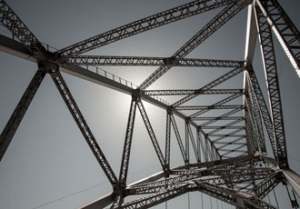The history of sustainable engineering solutions

Engineers are moving towards increasingly sustainable solutions. Government statistics show the contribution of waste by the construction, demolition, and excavation (CD&E) sector, accounts for 62% of the UK’s total waste. Therefore, the need to implement site waste management strategies has never been more important. There are many examples of sustainable engineering being utilised in the past. But recent innovations have highlighted the need to create sustainable spaces.
Here, we look at the history of sustainable engineering solutions, how it has paved the way for society today, and how we can build a future on its foundations.
Starting with sewers
While one may argue that ancient water distribution systems are the earliest form of sustainable engineering, modern sustainable engineering finds its beginnings in 19th century London.
Joseph Bazelgate designed the world’s first major sewer system to solve the Great Stink, where hot weather inflamed the smell of waste in the River Thames. Before the system, the sewers emptied directly into the river which was also the main supply of drinking water for the city. The design did more than change how waste was moved - it revolutionised how the public lived, with waterborne diseases reducing dramatically.
This intelligent design focused on improving environmental quality and the health of the population. It also paved the way for the next millennium of engineering.
Bridging to today
Since then, sustainable engineering has picked up the pace. This is particularly true in terms of sustainable bridge development.
The method of creating bridges with a limited environmental impact is a result of the UN’s 1987 commission report, ‘Our Common Future’. The report emphasised “the present generations’ responsibility to regenerate, maintain and improve planetary resources for use by future generations.”
The growing population meant that infrastructure, including bridges, was constructed at an increasing pace. In turn, this had detrimental consequences for the environment. The period saw a rapid increase in pollution from harmful emissions.
Nowadays, bridge construction considers longevity and maintenance in order to limit its environmental impact. Most bridge requirements stipulate a minimum serviceability of 100 years. Inspired by existing bridges, it’s understandable how bridge engineering can be designed with sustainability and longevity in mind.
Today, sustainable engineering solutions must consider structural integrity and the ease of maintenance. Historically, the utilisation of local supplies has been essential. Now, that approach has been adopted again in order to limit material transportation.
Building the future
Activism surrounding the climate emergency has spotlighted the need to protect the environment.
In the future, sustainable strategies will drive longevity and change how the public interacts with the environment. Engineering will not just reflect the technical and economic feasibility but also how resources are used.
Smart technology will be integrated into engineering solutions, with algorithms dictating the most structurally sound structures. From this, engineers may consider using more natural materials in their designs. Garden walls, for example, are becoming increasingly common in cities with poor air quality.
Engineering is built on its history. New solutions are being built on the original principles of sustainable construction. As engineers learn to make more innovative designs, integrating technology and nature into their construction will be imperative. This will be particularly important for private sector companies looking to reduce their environmental impact. With this in mind, the history and future of sustainability will always focus on longevity, human impact, and environmental improvement.
Similar articles
More from Cleveland Bridge
- The history of sustainable engineering solutions 15th January 2021












Write a comment
No comments